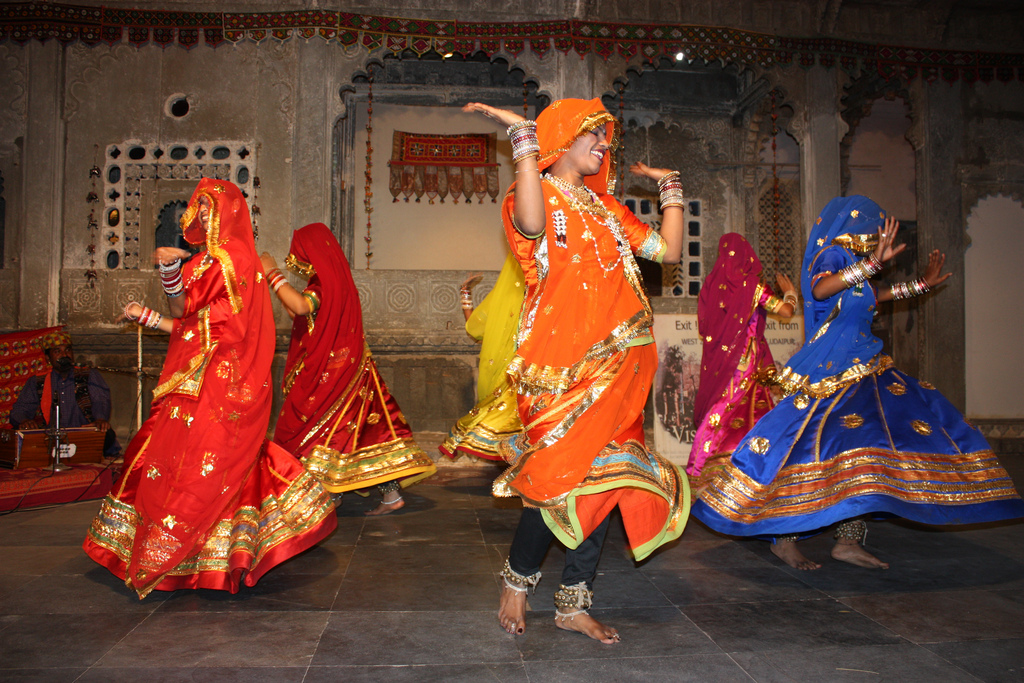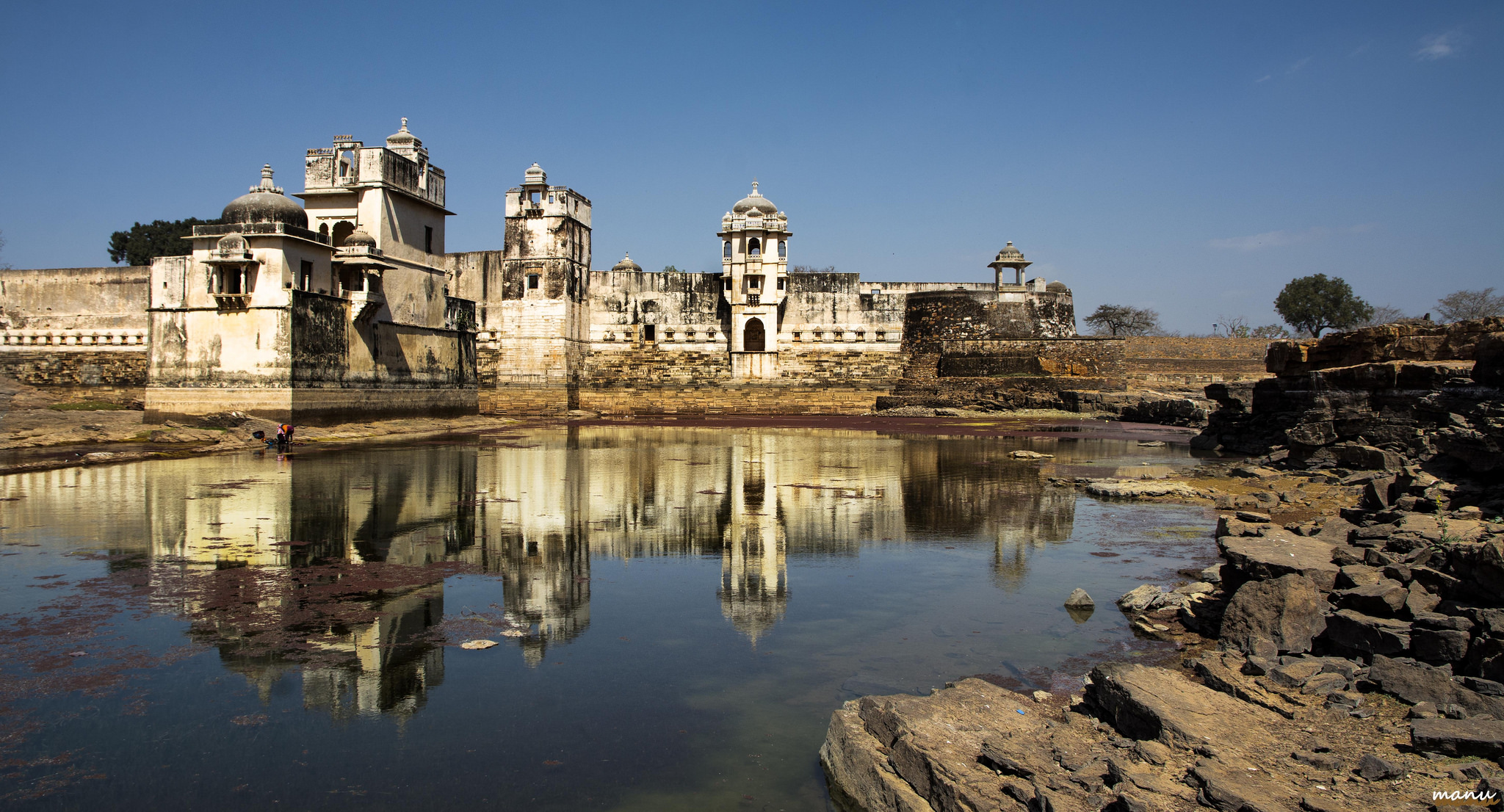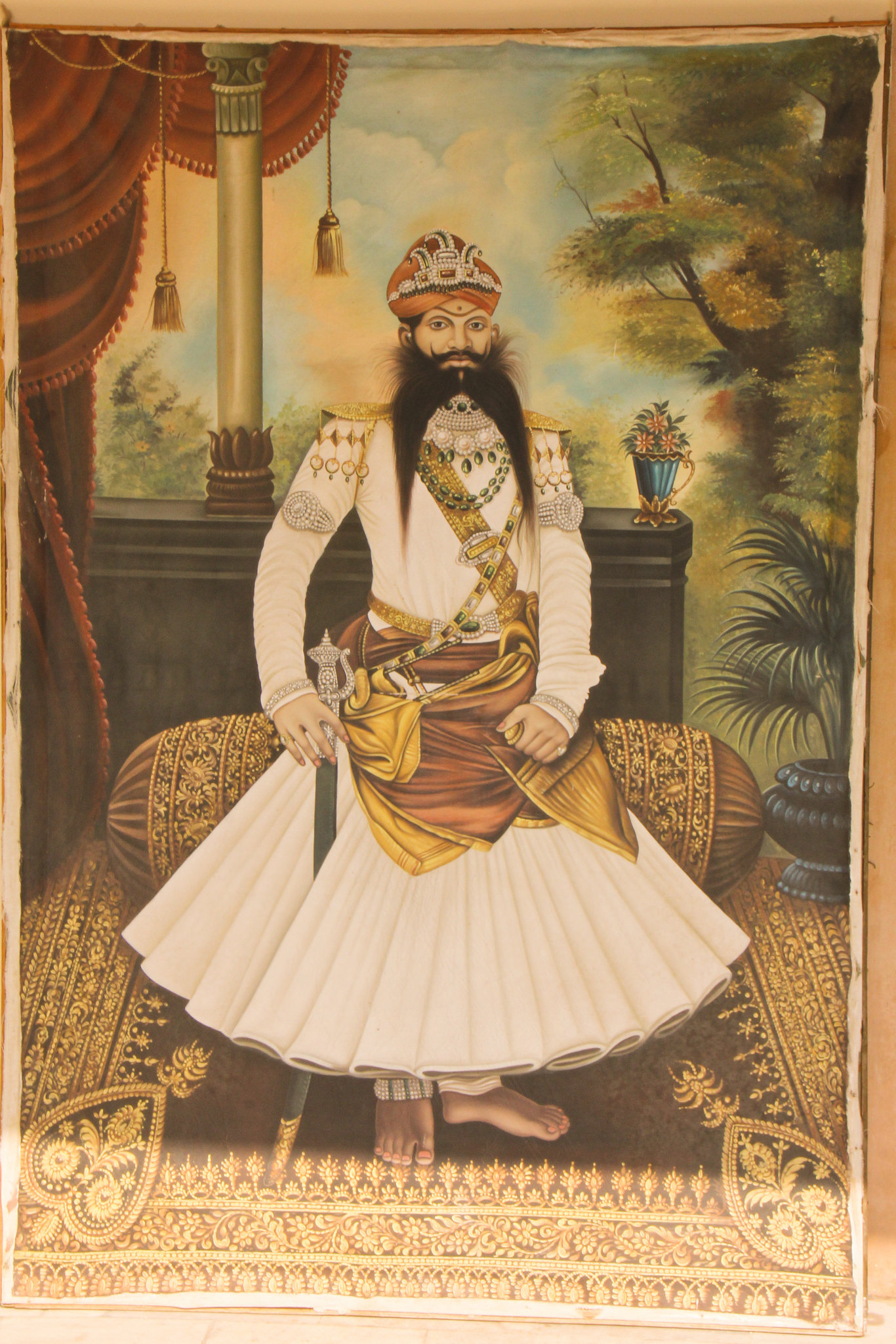Padmavati Posted by Rachael on Feb 1, 2018 in Hindi Language, Uncategorized
As many of you may be aware, the recently-released film, Padmaavat (पदमावत), by well-known director (निर्देशक/nirdeshak) Sanjay Leela Bhansali, has kicked up a bit of controversy (विवाद/vivaad, masc. noun). Without going too much into the controversy, I wanted to devote this blog to the text that inspired this film: the epic poem (महाकाव्य/mahaakaavya, fem. noun) Padmavat by Malik Mohammad Jayasi, who was a Sufi (a mystical sect of Islam) poet and pir/पीर (spiritual guide or mentor). This poem, composed in 1540, was originally written in Awadhi/अवधी, a language closely related to Hindi. It contains a plethora of Hindu imagery yet conveys with subtlety the intricacies of Sufi philosophy to any adherent to whom this poem may be recited.
Contrary to the assertions of many of this film’s protestors, Padmavati, the Rajput queen (रानी/raani) renowned for her beauty in the poem and film was not, in fact, a historical person. In the poem, Jayasi begins with a description of princess (राजकुमारी/raajkumaari) Padmavati and her way of life in Singhal (Sri Lanka). One of her closest friends is a beautiful and eloquent pet parrot (तोता/totaa), Hiraman. This parrot is later sentenced to death by Padmavati’s father due to his disapproval of the close friendship between his daughter and Hiraman. Luckily, the parrot manages to escape only to be caught by a bird catcher and sold as a pet to the Rajput king, Ratansen of Chittor. Once there, Hiraman begins to speak of the incomparable beauty of Padmavati. The king, intrigued by the parrot’s description, is soon filled with an irrepressible desire to see this woman himself.
Thereafter, the king travels to Singhal to meet Padmavati. First, he tries performing austerities in a temple (मंदिर/mandir, masc. noun) to impress her but, after he misses his chance to meet her, he attempts instead to attack (हमला करना/hamlaa karnaa) the fortress of Singhal on the advice of Lord Shiva. After some misunderstandings, Padmavati’s father, King Gandharvsen, gives her in marriage to Ratansen, along with a retinue of “padmini” women (the best type amongst the four types of women, who hail from Singhal, according to ancient Sanskrit texts). Yet, while the couple are immersed in romantic bliss in Singhal, Ratansen gets a message (संदेश/sandesh, masc. noun) from his pining first wife, Nagmati, begging him to return home to her. Realizing that his time alone with Padmavati has come to an end and he must return to resume his kingly duties, Ratansen travels with his second wife to his kingdom in Chittor.
The two wives initially squabble jealously over their husband, and Ratansen attempts to appease them by spending one night with each of them in turn. In the end, however, the king becomes fed up with their envious rivalry and admonishes them. Raghav Chetan, a minor character (चरित्र/charitra, masc. noun) in the poem who figures prominently in the film, is a Brahmin courtier who is dismissed from Ratansen’s court for winning a contest dishonestly; from there, as in the film, Raghav Chetan defects to the side of the sultan of Delhi, Alauddin Khilji. Soon afterward, Raghav Chetan tells Khilji of Padmavati’s unparalleled beauty (सुन्दरता/sundartaa, fem. noun), and Khilji decides he must have her for himself. In an attempt to simultaneously expand his territory and capture (बंदी बनाना/bandi banaanaa) Padmavati, Khilji travels to Chittor with a vast army (सेना/senaa, fem. noun) and attempts to defeat Ratansen and his men. However, Ratansen defeats him. Yet, the king of Chittor underestimates how clever the sultan can be.
Khilji wheedles his way into the palace through flattery (चापलूसी/chaaploosi, fem. noun) and manages to sneak a glance at Padmavati. With that one glance, Khilji is driven mad with desire (कामवासना/kaamvaasnaa, fem. noun) once more and again resolves that he must have the queen. He deceitfully captures the king and returns with him to Delhi. Padmavati then commands Ratansen’s vassals, Gora and Badal, to free their master from Khilji’s fortress and they do so by pretending to be Padmavati and her handmaids, thus gaining access to the stronghold. Yet, when the King returns to Chittor, he learns that a neighboring ruler proposed to Padmavati in his absence. To avenge his honor (सम्मान/sammaan, the film often renders this as आत्मसम्मान/aatmaasammaan or self-respect), Ratansen challenges this ruler, Devpal, to single combat, which ends in both men dead. It is at this juncture that Padmavati and Nagmati commit sati/सती (or immolation on a husband’s funeral pyre) to honor their deceased husband and maintain their reputations.
Meanwhile, Khilji attacks the fortress (किला/kilaa, masc. noun or गढ़ी/garhi, fem. noun) of Chittor a second time, seemingly unaware that Padmavati is already dead. With defeat (हार/haar, fem. noun) close at hand, the women of the fortress commit jauhar/जौहर or mass immolation in order to preserve her chastity and dignity. Thus, when Khilji enters the fortress, he finds only charred remains, and his victory (जीत/jeet, masc. noun) turns out to be meaningless. In the end, the poem offers a powerful message about the insatiability of desire for worldly things that are, ultimately, transient and illusory. Only in one’s transcendence of desire is one able to experience peace.
While the story line of this poem is not terribly unique or compelling, the way in which the poem is written, rife with Sufi symbolism and allusions to Hindu mythology, is incredible. With great skill, Jayasi manages (unintentionally) to subvert all of our modern expectations relating to divisions (विभाजन/vibhaajan, masc. noun) between religious and linguistic communities (समुदाय/samudaay, masc. noun), rendering them all but meaningless. If you’d like to read a translation of this and similar epic poems, you can check out late scholar (विद्वान/vidvaan) Aditya Behl’s translation of Qutban Suhravardi’s Sufi epic poem Mirigavati (The Magic Doe) as well as his book on this literary tradition called Love’s Subtle Magic: An Indian Islamic Literary Tradition as well as scholar Ramya Sreenivasan’s study of various Padmavati legends entitled The Many Lives of a Rajput Queen: Heroic Pasts in India.
Of course, Bhansali’s film has taken several departures from the original poem. In addition, the controversy that has been ignited by this film seems unthinkable in Jayasi’s time, when this type of poem was considered a piece of courtly art (कला/kalaa, fem. noun) as well as a religious tool used by mentors and adherents to better understand the intricate philosophy that underlies Sufism. Unlike Padmavati, King Ratansen as well as Alauddin Khilji were indeed real, historical (ऐतिहासिक/aitihaasik from the masc. noun इतिहास/itihaas for history) people, but Khilji never assailed Ratansen’s fortress in order to capture a beautiful queen. He did so for the more logical and practical reason of expanding his territory and thus sphere of influence. And, contrary to his negative (नकारात्मक/nakaaraatmak) portrayal in Bhansali’s film, Khilji is spoken of highly by historians and in contemporaneous records, in which he is portrayed as a refined sophisticate, heavily inspired by the rigid code of ethics (नीति/niti, fem. noun) and etiquette (शिष्टाचार/shishtaachaar, masc. noun) of the Persian court of the time. For whatever reason, Bhansali chose to change key elements of history and fiction, but his film should by no means be taken as the last word on the matter. Rather, Bhansali is a director inspired by his own vision of the past to create opulent films that celebrate these time periods as isolated, compartmentalized, changeless and romanticized versions of their actual selves.
Aapko yah film pasand aayi? Niche comment kijiye aur bataiye kyoon pasand aayi yaa kyoon nahin!
आपको यह फ़िल्म पसंद आयी? नीचे कॉमेन्ट कीजिये और बताइये कयों पसंद आयी या क्यों नहीं!

Build vocabulary, practice pronunciation, and more with Transparent Language Online. Available anytime, anywhere, on any device.






